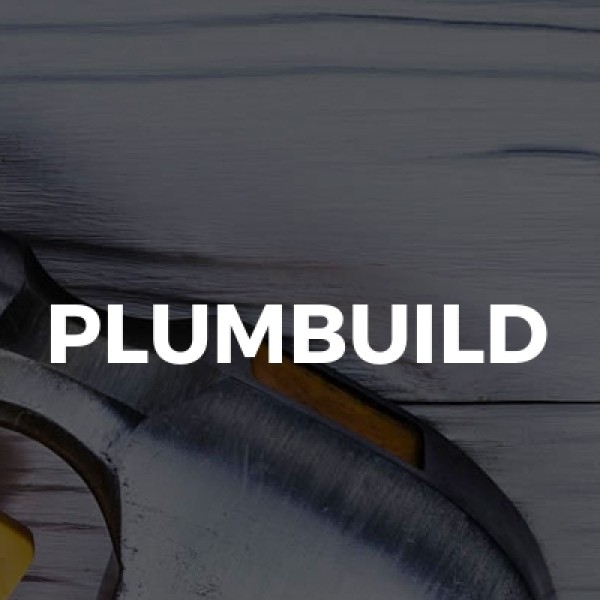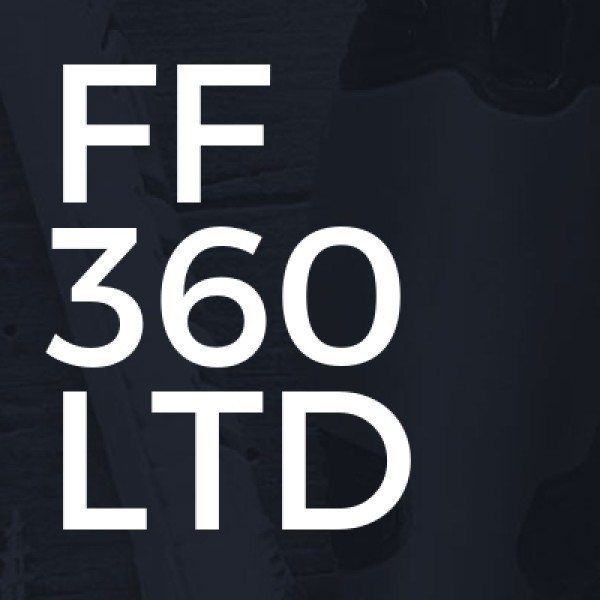Drainage in Bow
Welcome to Plumbuild, your go-to solution for all plumbing and property maintenance needs in South Croydon an... read more »
Welcome to Metropolitan Gas Company, your go-to experts for all things plumbing and heating in North Cheam and the wider Sutton, London a... read more »
Welcome to AWG Building & Construction Co Ltd, your premier choice for builders, driveway contractors, groundwork contractors, drainage e... read more »
Welcome to Superplumb Ltd, your premier choice for plumbing services in the charming Welsh Harp area, proudly s... read more »
Welcome to FF 360 LTD, your trusted partner for all your construction and demolition needs in Barking and Dagenham, London. As a leading... read more »
Welcome t... read more »
Welcome to Instaflame Property Services Ltd, your go-... read more »
Romford Drains Ltd is a premier drai... read more »
Drainage And Groundworks Ltd is your... read more »
Welcome t... read more »
Welcome to Mr, your trusted partner for exceptional d... read more »
Welcome to A Star Drain Masters Ltd, your go-to drain... read more »
Welcome to Direct Drains, your go-to experts for drai... read more »
UK Drains Limited is a premier drain... read more »
Two Brothers: Your Trusted Tradespeople in Le... read more »
Welcome to B & R Property Maintenance, your go-to sol... read more »
Welcome to Accelerated Drain Services Ltd, your trust... read more »
KW Drainage Ltd: Premier Drainage Services in... read more »
Welcome to RM Drainage and Plumbing Ltd, your go-to e... read more »
Search Drainage in places nearby
Understanding Drainage in Bow: An Overview
Drainage systems are essential for maintaining the health and safety of any community, and Bow is no exception. Situated in the heart of East London, Bow is a vibrant area with a rich history and a growing population. As such, effective drainage is crucial to prevent flooding, manage stormwater, and ensure the proper functioning of the urban environment. This article delves into the intricacies of drainage in Bow, exploring its history, current systems, challenges, and future developments.
The Historical Context of Drainage in Bow
Bow's drainage system has evolved significantly over the centuries. In the past, the area relied on natural watercourses and rudimentary channels to manage water flow. As Bow developed into a bustling urban centre, the need for a more sophisticated drainage infrastructure became apparent. The Victorian era marked a turning point, with the construction of underground sewers and improved street drainage systems. These historical developments laid the groundwork for the modern drainage networks we see today.
Victorian Innovations
During the Victorian period, engineers introduced innovative drainage solutions to combat the challenges posed by rapid urbanisation. The construction of the London sewer system, spearheaded by Sir Joseph Bazalgette, was a monumental achievement that significantly improved public health and sanitation. Bow benefited from these advancements, with new sewers and drains helping to manage waste and stormwater more effectively.
Natural Watercourses and Their Role
Bow's natural watercourses, such as the River Lea, have played a vital role in the area's drainage for centuries. These waterways not only provide a natural outlet for excess water but also support local ecosystems and biodiversity. Efforts to preserve and enhance these natural features continue to be an integral part of Bow's drainage strategy.
Current Drainage Systems in Bow
Today, Bow's drainage infrastructure is a complex network of pipes, sewers, and channels designed to manage both wastewater and stormwater. The system is maintained by local authorities and utility companies, ensuring that it operates efficiently and effectively.
Components of the Drainage System
- Sewers: These underground pipes transport wastewater from homes and businesses to treatment facilities.
- Storm Drains: Designed to handle rainwater, these drains prevent flooding by directing water away from streets and buildings.
- Pumping Stations: These facilities help move water through the system, especially in low-lying areas where gravity alone is insufficient.
Maintenance and Upkeep
Regular maintenance is crucial to keep Bow's drainage system functioning smoothly. This includes cleaning and inspecting sewers, repairing damaged pipes, and ensuring that storm drains are free from debris. Local authorities work diligently to address any issues promptly, minimising the risk of flooding and other drainage-related problems.
Challenges Facing Bow's Drainage System
Despite its robust infrastructure, Bow's drainage system faces several challenges. These include climate change, urbanisation, and aging infrastructure, all of which can impact the system's effectiveness.
Climate Change and Increased Rainfall
Climate change is leading to more frequent and intense rainfall events, putting additional pressure on Bow's drainage system. The increased volume of water can overwhelm existing infrastructure, leading to flooding and water damage. Adapting to these changes is a priority for local planners and engineers.
Urbanisation and Its Impact
As Bow continues to grow and develop, the demand on its drainage system increases. New buildings and infrastructure can alter natural water flow patterns, necessitating updates and expansions to the existing drainage network. Balancing development with effective water management is a key challenge for the area.
Aging Infrastructure
Many components of Bow's drainage system are decades old and require regular maintenance and upgrades. Aging pipes and sewers are more prone to leaks and blockages, which can lead to inefficiencies and increased maintenance costs. Investing in modernisation is essential to ensure the system's long-term viability.
Innovative Solutions for Drainage in Bow
To address these challenges, Bow is embracing innovative solutions and technologies that enhance its drainage capabilities. These efforts aim to improve efficiency, reduce environmental impact, and ensure the system's resilience in the face of future challenges.
Green Infrastructure
Green infrastructure, such as rain gardens, permeable pavements, and green roofs, is becoming increasingly popular in Bow. These solutions help manage stormwater naturally, reducing the burden on traditional drainage systems and promoting sustainability.
Smart Drainage Technologies
Advancements in technology are revolutionising drainage management in Bow. Smart sensors and monitoring systems provide real-time data on water levels and flow rates, allowing for proactive maintenance and rapid response to potential issues.
Community Involvement and Education
Engaging the local community in drainage management is crucial for long-term success. Educational programmes and initiatives encourage residents to adopt water-saving practices and report drainage issues promptly. Community involvement fosters a sense of ownership and responsibility, contributing to the system's overall effectiveness.
The Future of Drainage in Bow
Looking ahead, Bow's drainage system is poised for continued evolution and improvement. Future developments will focus on enhancing resilience, sustainability, and adaptability to changing environmental conditions.
Resilience Planning
Resilience planning involves preparing for extreme weather events and other potential disruptions. By incorporating resilience into drainage design and management, Bow can better withstand the impacts of climate change and other challenges.
Collaboration and Partnerships
Collaboration between local authorities, utility companies, and the community is essential for effective drainage management. Partnerships enable the sharing of resources, expertise, and knowledge, leading to more comprehensive and efficient solutions.
Investment in Infrastructure
Ongoing investment in Bow's drainage infrastructure is crucial for its continued success. Upgrading aging components, expanding capacity, and integrating new technologies will ensure the system remains robust and reliable for years to come.
Frequently Asked Questions
- What is the main purpose of Bow's drainage system? The primary purpose is to manage wastewater and stormwater, preventing flooding and ensuring public health and safety.
- How does climate change affect Bow's drainage? Climate change leads to more intense rainfall, increasing the risk of flooding and putting additional pressure on the drainage system.
- What are some innovative drainage solutions in Bow? Green infrastructure and smart technologies are among the innovative solutions being implemented to enhance drainage efficiency and sustainability.
- Why is community involvement important in drainage management? Community involvement helps identify issues early, promotes water-saving practices, and fosters a sense of responsibility for the local environment.
- What challenges does Bow's drainage system face? Key challenges include climate change, urbanisation, and aging infrastructure, all of which can impact the system's effectiveness.
- How is Bow preparing for future drainage needs? Bow is focusing on resilience planning, collaboration, and investment in infrastructure to meet future drainage demands.
In conclusion, drainage in Bow is a complex and dynamic system that plays a vital role in the area's urban environment. By understanding its history, current challenges, and future directions, we can appreciate the importance of effective drainage management and the efforts being made to ensure its continued success. Through innovation, collaboration, and community engagement, Bow is well-equipped to tackle the drainage challenges of today and tomorrow.
Send a message









